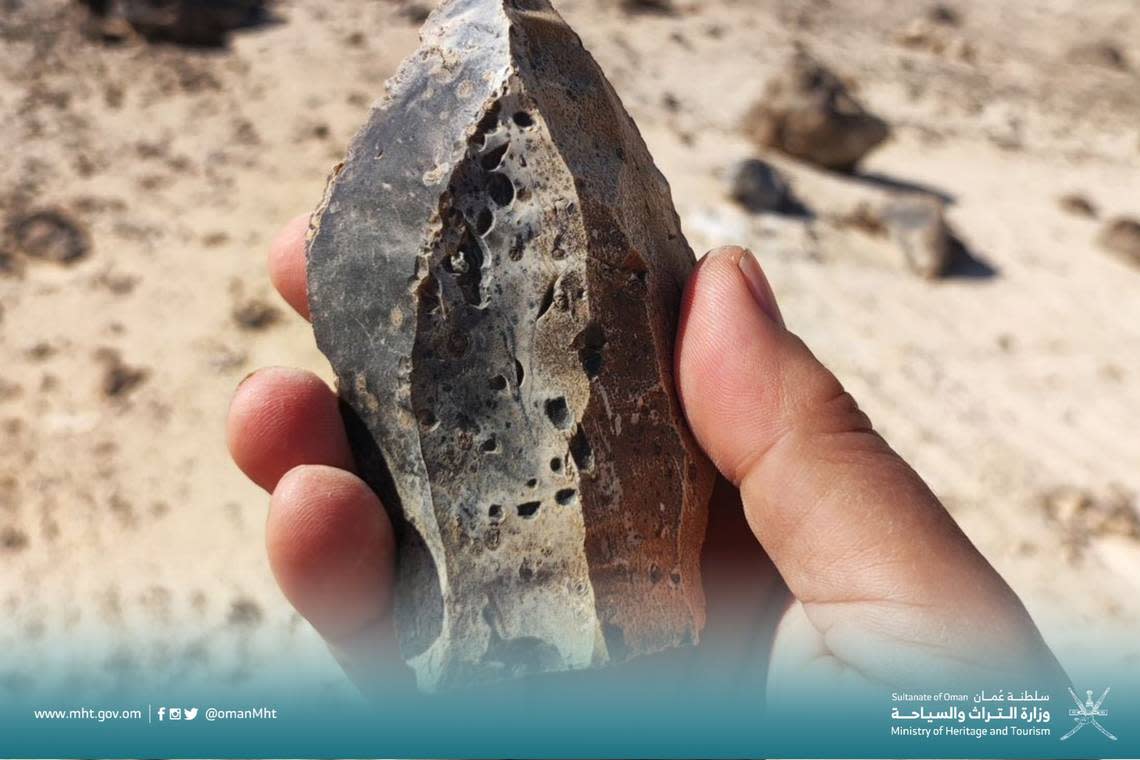Shells for holding cosmetics among finds from thousands of years ago in mass grave in Oman
An ancient mass grave in Oman is giving archaeologists insight into ancient religious rituals, trade and ... beauty products?
The Ministry of Heritage and Tourism recently unearthed a variety of artifacts from a mass grave dating to the Neolithic era in the country’s Nafun region on the eastern coast, according to a Dec. 21 Instagram post.
Experts say the grave was reused, so the unearthed artifacts date to the first millennium BC, making them about 3,000 years old.
Among the findings were pottery pieces, copper holdings and shells used to hold cosmetics.

Archaeologists said they uncovered an additional set of 155 artifacts in the region outside of the grave. These discoveries included rock inscriptions, tombs and three-stone tombstones known as Triliths.
Experts believe the triliths — which are made of two stones stood next to each other with a third stone on top — were used for religious rituals and were an important part of Iron Age trade routes, according to the ministry.
Google Translate was used to translate the Ministry of Heritage and Tourism’s Instagram post
Hundreds of 1,000-year-old statues unearthed at ruins of ancient Chinese market
Peek inside newly uncovered Roman sanctuary showing life in Netherlands 1,700 years ago
2,000-year-old lost ‘kingdom’ with ballcourts and pyramids discovered in Guatemala
Crocodile heads — buried 4,000 years ago — uncovered in tombs in Egypt, photos show
Gold jewelry uncovered in Egypt could reveal more about life 3,000 years ago. See photos
